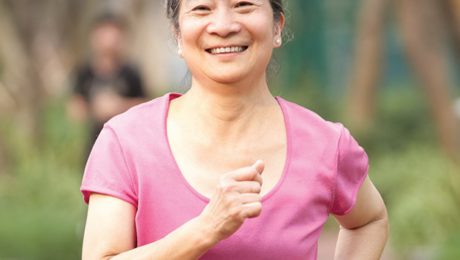TELEVISION AND SENIORS
TELEVISION AND SENIORS
ACTIVITIES
It might surprise you to learn that older adults watch more television than younger people do. Watching TV comprises most of the leisure time for adults aged 70 to 105 years old. Television can be an avenue to learning new things, connecting with the world, creating a diversion, and providing some light entertainment. However, it can also supplant physical or recreational activities and real-world interactions.
Pluses and Minuses
If you are mindful, there are certainly benefits to TV for our older adults. As they become less able to go out to movies, concerts, or spectator sports, TV can fill this void. While some sitcoms and light viewing can help to relieve depression, sometimes the news or similar shows can make a depressed mood worse. It is important to pay attention to what our loved ones are watching and find a suitable balance.
The most notable down-side to excessive TV watching is some decrease in mobility. In general, a sedentary lifestyle choice can be detrimental to bone health, cellular/immunity function, and cardiovascular efficiency. Excessive TV use has been linked with a greater risk for Type 2 diabetes, obesity, lower life satisfaction, and an increased risk for dementia. Excessive TV viewing has also been linked with cognitive decline. This can be because viewers are not spending as much time doing things that can keep their minds sharp such as reading, playing board games, talking with friends and relatives, or working on puzzles. If they eagerly engage in conversation with you during a show, it can be an indication to you that they are simply using the TV to pass time and would prefer another outlet. It can help both you as the caregiver and your loved one to spark conversations based on the shows they are watching. Use open ended questions like “What decision would you have made in that situation?” or “When was the last time you did x activity?” or “Who does that character remind you of?”. You can also use a board game or book that is depicted in a show as a cue to suggest playing that game or start reading that book with your loved one. Source Medical News Today and National Institutes of Health
If TV has become an outlet for your loved one, try to ensure that they are also getting plenty of exercise and movement during the rest of the day. It can be helpful to set up a habit of having them stand up and stretching during commercials or take a walk to another room between shows. Incorporate exercises that can be done from a seated position into their day. On a nice day, suggest a quick walk outside or to a nearby window to watch “reality TV.”
TELEVISION AND SENIORS
What Are They Watching?
If your loved one is spending more than four hours a day watching TV, it is possible that they are simply using it to pass time, rather than to provide practical information or relaxation. If they cannot tell you what they just watched, it might be time to find an activity that is more brain engaging for them. If they insist on using the TV as an activity, perhaps ensure that their programming selection includes some of the following to help keep their spirits up:
- Light-hearted sitcoms
- Uplifting dramas
- Educational programs
- Sports or reality TV
- Movies from when they were young adults
Source: Center for Media Literacy
Where Are They Watching?
While cable TV and network programming continue to be the most accessible, more viewers are turning to streaming, where they have control of what they watch and when. These can be accessed by anyone with an internet connection and the correct hardware. If your loved one has a smart TV, most streaming services can be accessed directly through the TV interface. If you set this up for them, make sure to check the “remember me” box in the setup screen so that your loved one only needs to turn the TV on to watch their favorite shows. If your older adult does not have a smart TV, they will need a separate device to help manage the streaming services. Source Medical Alert Systems
Happiness Quotient
A new study by the University of Maryland concludes that unhappy people watch more TV, while people who describe themselves as very happy spend more time reading and socializing. Analyzing 30-years’ worth of data, the Maryland researchers report that spending time watching television may contribute to viewers’ happiness in the moment, with less positive effects in the long run. Source: Phys.org
Powered by WellSky
- Published in IN HOME CARE
FOOD SAFETY HEALTH
FOOD SAFETY
According to the Centers for Disease Control and Prevention (CDC) each year 48 million illnesses, 128,000 hospitalizations, and 3,000 deaths in this country can be traced to foodborne pathogens. We’ve probably all heard our older loved ones comment that they have always (insert poor food storage adage here) and it was fine. However, bacteria have evolved since their youth. There are both more types of bacteria and they are more resistant to the usual elimination methods. Food sources have become more global. Even fruits and vegetables are coming from other states and other countries. This both increases the number of pathogens that can be picked up between the place of origin and our homes and introduces new bacteria that wouldn’t be in our environment had we shopped locally. Source: Partnership for Food Safety Education
Who Is At Risk?
Adults aged 65 and older are at a higher risk for hospitalization and death from foodborne illnesses. There are several reasons for this:
- Their gastrointestinal tract holds food for longer, allowing more bacteria to grow.
- Liver and kidneys typically function at a lower level, not clearing bacteria and toxins as efficiently as when they were younger.
- Their stomach may not produce as much bacteria-reducing acid.
- Underlying chronic conditions such as diabetes and cancer increase the susceptibility to foodborne illnesses.
Source: FoodSafety.gov
Did You Know?
Flour, regardless of the brand, can contain bacteria that cause disease. Flour is ground from raw grain, which may be bleached, but not usually treated to kill bacteria like E. coli. The FDA recommends the following precautions:
- Do not eat raw cookie dough, cake mix, batter, or dough that is meant to be cooked.
- Follow instructions for cooking any products containing flour.
- Wash hands and work surfaces thoroughly after contact with dough or flour.
- Chill dough promptly if not baking immediately.
Source: Food and Drug Administration
FOOD SAFETY
Tips for Safer Food Storage and Handling
You can start practicing safe handling as soon as you choose your foods in the market. Here are some basic tips:
- Separate raw meat, poultry, seafood, and eggs from other foods in your shopping cart, grocery bags, and refrigerator. Use the plastic bags provided in the market (or your own) to further isolate these foods.
- Wash hands and surfaces often. Wash hands for at least 20 seconds before and after handling food. Rinse all fruit and vegetables, including those with rinds that won’t be eaten. Never place any food on an uncleaned surface.
- Refrigerate foods promptly in a fridge set to a temperature of 40°F or below. Bacteria that cause food poisoning multiply most quickly between 40°F and 140°F
- Never let raw meat, poultry, eggs, fish, cooked food, or cut fruits and vegetables sit at room temperature for more than two hours before refrigerating. Frozen foods should be kept at a temperature of 0°F or below.
- Do not defrost foods at room temperature. Defrost in the fridge, cold water, or the microwave. Cook immediately once they have been thawed.
- It is important to cook food at a temperature that kills the harmful bacteria. A food thermometer should be a staple for any home cook. While foods have a variety of ideal temperatures, a few minimums include:
- Roasts and steaks should be at least 145°F
- Poultry should be at least 165°F Check internal temperature at the innermost part of the thigh or wing and the thickest part of the breast.
- Ground meat should be at least 160°F The process of grinding distributes bacteria.
- Fish should be at least 145°F and/or until the flesh is opaque and flakes easily with a fork.
- Eggs should be cooked until the yolk and white are firm.
- When microwaving, stir and rotate to ensure there are no cold spots.
- Sauces and gravies should be brought to a boil when reheating.
- Other leftovers should be heated thoroughly to 165°F.
Source Partnership for Food Safety Education
Best If Used By
The date on your packaged food is to indicate the date by which the food will be the best flavor and quality. The date when the food is “bad” can be anywhere from days to months beyond that. Unfortunately, there are no universal rules for food dating. If you have questions or concerns about the quality, safety or labeling of the foods you buy, reach out to the company directly.
Source: Food and Drug Administration
Powered by WellSky
- Published in IN HOME CARE
STARTING A FITNESS ROUTINE
STARTING A FITNESS ROUTINE
STARTING A FITNESS ROUTINE
When thinking of starting a fitness regime, many people may envision smelly gyms, sweaty feet, and plenty of grunting and pain. Often lofty goals, such as races or competitions, sway people from starting a sensible routine. Fitness goals should be about improving our health and how we interact with the world, not about increasing our status. It’s never too late to start a fitness commitment. Exercise reduces risk of cardiovascular disease, hypertension, type 2 diabetes, osteoporosis, obesity, colon cancer, depression, and breast cancer. It also decreases the risk of falls and fall-related injuries. Consult their physician before having an older loved one start a new fitness program, especially if there are health concerns. Some tips to map a workout:
- Aim for just 15 to 30 minutes a day to start. Break workouts up into ten-minute increments throughout the day, if necessary.
- Make sure that they are drinking plenty of water before, during, and after their session.
- To minimize fall risk, ensure appropriate footwear for the activity. Start and end the workout with slower movements and activities.
- Don’t let them overdo it. The goal is not pain and exhaustion.
ACTIVITIES
Categories of Exercise
There are several types of activity to consider working into a weekly schedule.
Aerobic
Aerobic exercise is just as the word implies, good for the oxygen exchange between the lungs and heart. Aim for at least two hours of moderate aerobic exercise or one and a half hours of vigorous intensity each week. Spread this time over 3-5 days. Remember that vigorous for them may be significantly less than vigorous for you. Especially if they have a competitive nature, it should be stressed that they do not overdo it. Some examples of aerobic activity that might appeal to your loved one are:
- Brisk walking
- Biking
- Jogging
- Dancing
- Swimming
- Aerobic classes
- Yard work
- Tennis
- Golf (without a cart)
Questions for the Doctor Before Starting a Fitness Program
- Are there exercises or activities they should avoid?
- Is their preventative care up to date for example, tests for osteoporosis, diabetes, or cardio-fitness?
- How do any health conditions affect their ability to perform the selected activities?
- What modifications might be necessary to safely perform the activities?
Source: National Institute on Aging
STARTING A FITNESS ROUTINE
Categories of Exercise (continued)
Muscle Strengthening
Having stronger muscles has been proven to improve bone density. Aim for at least two days a week. The focus can be varied from session to session to include legs, hips, back, chest, abdomen, shoulders, and arms. To help build muscle, have your older adult start with a weight that they can safely lift for eight repetitions. The repetitions should be slow and controlled three seconds to lift the weight, hold for one second, then lower for three seconds. Breathe in as the weight is lifted and out as it’s lowered. Do these eight to fifteen times and then take a rest. If fifteen seems easy, consider increasing the weight by a pound. Some good muscle strengthening tools and activities include:
- Weight machines
- Handheld weights
- Yoga
- Exercise bands
- Calisthenics
- Tai Chi
- Digging, lifting, and carrying as a part of gardening
Balance
More than one third of senior citizens suffer from fall-related injuries. Improving balance should be a core goal for any exercise program. Aim for three or more days a week. Ensure that there are adequate safety measures in place, such as things or people to hold onto. Some easy exercises to consider include:
- Standing from a seated position
- Backward walking
- Sideways walking
- Heel walking
- Toe walking
- Standing on one leg
Stretching
Stretching is important and should be done at a minimum at the end of every workout. Do not allow your loved one to “bounce” the stretch or to stretch further than they can easily go to feel a slight tug. It should not hurt. Improvement will happen naturally.
Source: University of Nebraska, Institute of Agriculture and Natural Resources. National Institute on Aging, Harvard Medical School, and CDC
Motivation
It is never too late to start working out. A recent study showed that many of the losses in strength, flexibility, and stamina could be reversed, even in the frailest of participants. The study followed 100 participants, aged 72 to 98. They did resistance exercises three times a week for ten weeks. They showed marked improvement over their sedentary counterparts, being able to lift more weight, climb more stairs, and walk faster.
Powered by WellSky
- Published in IN HOME CARE




